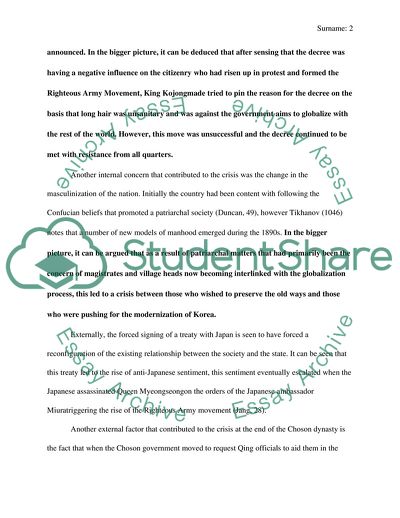Cite this document
(Korea's Place in the Sun Assignment Example | Topics and Well Written Essays - 2250 words, n.d.)
Korea's Place in the Sun Assignment Example | Topics and Well Written Essays - 2250 words. https://studentshare.org/history/1864901-korean-history-criticalanalytical-final-essay
Korea's Place in the Sun Assignment Example | Topics and Well Written Essays - 2250 words. https://studentshare.org/history/1864901-korean-history-criticalanalytical-final-essay
(Korea'S Place in the Sun Assignment Example | Topics and Well Written Essays - 2250 Words)
Korea'S Place in the Sun Assignment Example | Topics and Well Written Essays - 2250 Words. https://studentshare.org/history/1864901-korean-history-criticalanalytical-final-essay.
Korea'S Place in the Sun Assignment Example | Topics and Well Written Essays - 2250 Words. https://studentshare.org/history/1864901-korean-history-criticalanalytical-final-essay.
“Korea'S Place in the Sun Assignment Example | Topics and Well Written Essays - 2250 Words”. https://studentshare.org/history/1864901-korean-history-criticalanalytical-final-essay.


